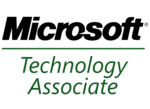Exam 98-366: Networking Fundamentals/Understanding Network Hardware
This lesson covers Understanding Network Hardware. It looks at switches, routers, and media types.
Activity 1 - Understand Switches
[edit | edit source]This objective may include but is not limited to: transmission speed; number and type of ports; number of uplinks; speed of uplinks; managed or unmanaged switches; VLAN capabilities; Layer 2 and Layer 3 switches,, security options; hardware redundancy; support; backplane speed; switching types, mac table;understanding capabilities of hubs vs. switches.
- Read What is a Network Switch.
- Read Internetworking Basics.
- Read Unmanaged versus Managed Switches.
- Read Layer 2 and Layer 3 Switch Evolution.
- Read How Do Hubs, Switches, Routers, and Access Points Differ.
- Read Strategies for Fault-Tolerant Computing.
Activity 2 - Understand Routers
[edit | edit source]This objective may include but is not limited to: transmission speed considerations, directly connected routes, static routing, dynamic routing (routing protocols), default routes; routing table and how it selects best route(s); routing table memory, NAT, software routing in Windows Server.
- Read How NAT Works.
- Read What is a Network Switch vs. a Router?.
- Read Remote Access.
Activity 3 - Understand Media Types
[edit | edit source]This objective may include but is not limited to: cable types and their characteristics, including media segment length and speed; fibre optic; twisted pair shielded or nonshielded; catxx cabling, wireless; ; susceptibility to external interference (machinery, power cables, etc); susceptibility to electricity (lightning), susceptibility to interception.
- Read Network Media Types.
- Read Building a Home Network, Part 3: the Wiring.
- Read Network Media.

